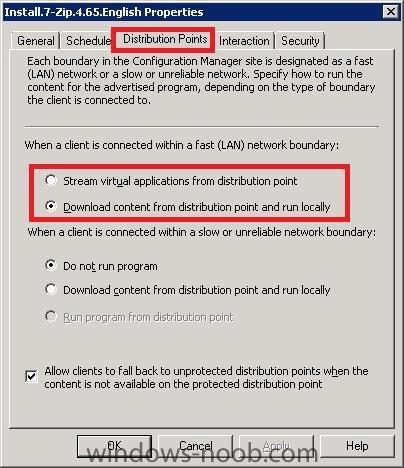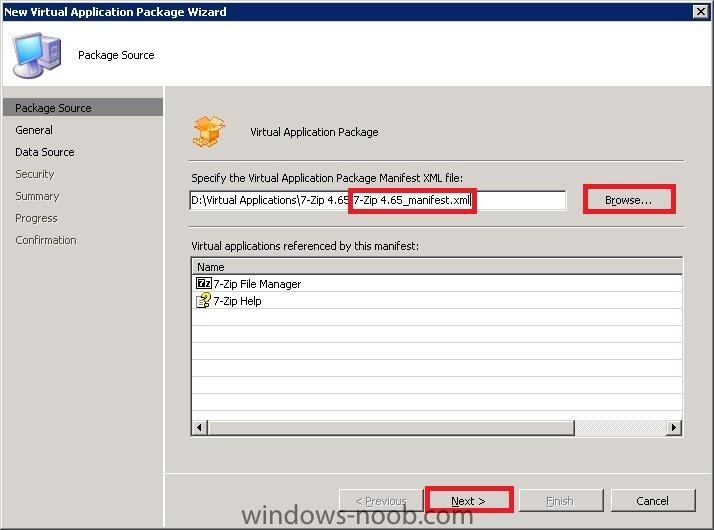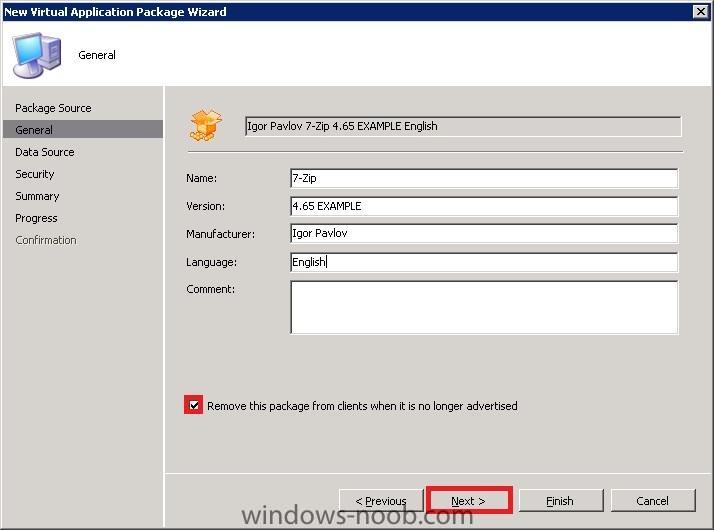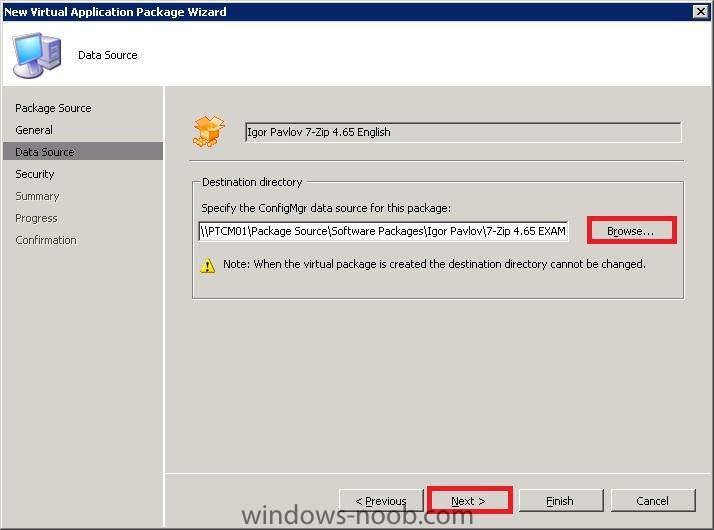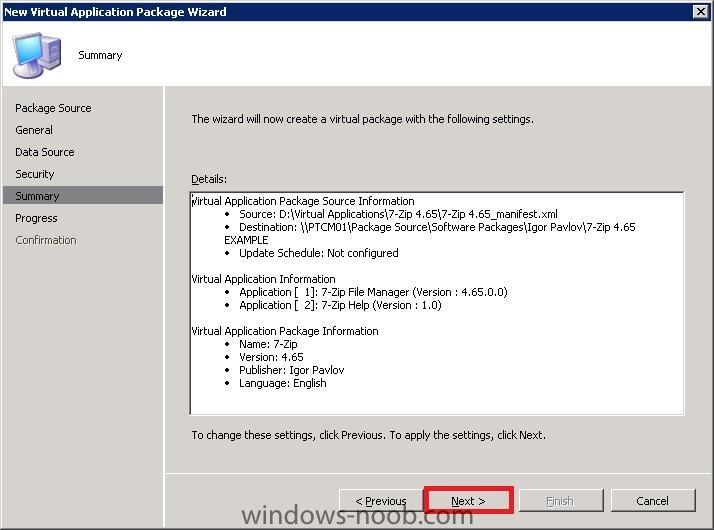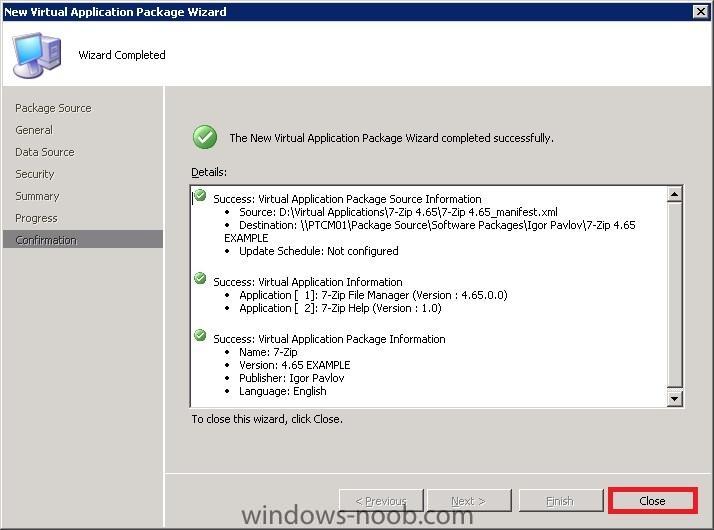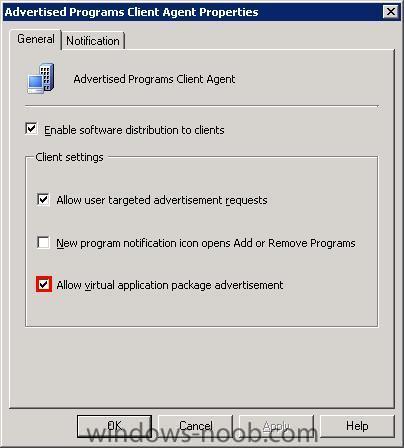-
Posts
2925 -
Joined
-
Last visited
-
Days Won
79
Everything posted by Peter van der Woude
-

Search Folder for Updates NOT requiring reboots...
Peter van der Woude replied to jbhaire2004's question in Software Update Point
I think not, because that is not something you can search on with the Search Folders... -
I my tutorial I indeed use 7zip as an example. You first have to deploy the App-V Client 4.5 CU1 to the client (with the commandline setup.exe /S /v /qn). Then you have to create a Virtual Application with for example the App-V Sequencer. Then you can add a Virtual Application Package to ConfigMgr, see http://www.windows-noob.com/forums/index.php?showtopic=1129 and if you want to stream the Virtual Application from your DP instead of out of the client cache, see http://www.windows-noob.com/forums/index.php?showtopic=1131 I hope this helps.
-
Prerequisite: ConfigMgr 2007 SP1 R2 is installed and there is an Advertisement of a Virtual Application. In this article I will tell and show in a few steps how to make a Virtual Application stream from a Distribution Point in ConfigMgr 2007. Keep in mind that even when you are streaming a Virtual Application with ConfigMgr you will still need the App-V Client to run the applications (for installing the App-V Client see: http://www.petervanderwoude.nl/post/How-to-install-the-App-V-Client-with-ConfigMgr-2007.aspx). To stream a Virtual Application from a Distribution Point with ConfigMgr follow the next steps: 1. Open the Configuration Manager Console and browse to System Center Configuration Manager\ Site Database\ Computer Management\ Software Distribution\ Advertisements 2. Select an Advertisement of a Virtual Application and click in the Actions panel on the right Properties. 3. Select the Distribution tab. This is where to select whether or not this Virtual Application should be streamed from the Distribution Point. Keep in mind that when you select this it will work for all the clients that get the Advertisement. So before you do this you should really think about the load it creates and the mobility of your users.
-
Prerequisite: ConfigMgr 2007 SP1 R2 is installed and there is a Virtual Application created (for example with the App-V Sequencer). In this article I will tell and show in a few steps how to create Virtual Application Packages in ConfigMgr 2007. Keep in mind that even when you have Virtual Application Packages in ConfigMgr you will still need the App-V Client to run the applications (for installing the App-V Client see: http://www.petervanderwoude.nl/post/How-to-install-the-App-V-Client-with-ConfigMgr-2007.aspx). A Virtual Application Package is created in almost the same way as a normal Software Package, only the Wizard for creating a Virtual Application Package is a bit different. To add a Virtual Application Package to ConfigMgr follow the next steps: 1. Open the Configuration Manager Console en browse to System Center Configuration Manager/ Site Database/ Computer Management/ Software Distribution/ Packages 2. On the right in the Actions Panel click New > Virtual Application Package and the New Virtual Application Package Wizard will start. 3. On the Package Source page Browse to the location where the Virtual Application (.xml) is created and click Next. Keep in mind that you should use at least the App-V Sequencer 4.5 because previous versions are not compatible with ConfigMgr. 4. On the General page you have to fill in some information about the package. The checkbox with Remove this package from clients when it is not advertised is very important. Keep this selected if you want the package to be deleted when it is not longer advertised. Click Next. 5. On the Data Source page Browse to the location where the package has to be stored (the location where all the normal Software Packages are stored) and click Next. 6. On the Security page click Next. 7. On the Summary page click Next. 8. On the Confirmation page click Close. The big difference with creating a normal Software Package is that the Wizard of creating a Virtual Application Package copies the package to the location of you packages. During this action ConfigMgr will adjust the OSD-file so it uses the right package information. Creating a Distribution Point and an Advertisement for a Virtual Application Package works the same as for a normal Software Package. So I will not repeat those steps in this post.
-
I think this will help: http://myitforum.com/cs2/blogs/cstauffer/archive/2008/12/08/filtering-the-approval-status-of-clients-in-collections-in-configmgr-2007.aspx
-
I use SCCM to deploy the App-V Client. I use version 4.5 CU1, because I use it in combination with Windows 7. I create a normal Software Package with a Program that runs the command setup.exe /S /v /qn. Another possibility is to create a Package from Definition. The definition file for the App-V Client can be found at: <Installdirectory>\Microsoft Configuration Manager\Tools\VirtualApp. I will make another "guide" for advertising and streaming a Virtual Application.
-
Prerequisite: ConfigMgr 2007 SP1 R2 is installed. In this article I will tell and show in a few steps which settings are needed to be able to advertise and stream Virtual Applications. Keep in mind that even when you have ConfigMgr configured for Virtual Applications you will still need the App-V Client to run the applications (for installing the App-V Client see: http://www.petervanderwoude.nl/post/How-to-install-the-App-V-Client-with-ConfigMgr-2007.aspx). To be able to advertise Virtual Applications the Advertised Programs Client Agent has to be enabled for running virtual application packages. To do this, follow the next steps: 1. Open the Configuration Manager console and navigate to System Center Configuration Manager / Site Database / Site Management / <your_sitename> / Site Settings / Client Agents. 2. Right-click the Advertised Programs Client Agent and select Properties. 3. On the General tab click Allow virtual application package advertisement to enable the client for running Virtual Applications (See picture). 4. Click OK to close the properties. Note: This enables the Advertised Programs Client Agent to run Virtual Application packages on all Configuration Manager 2007 client computers in the site. To be able to stream Virtual Applications the Distribution Point has to be enabled for streaming virtual application packages. To do this, follow the next steps: 1. Open the Configuration Manager console and navigate to System Center Configuration Manager / Site Database / Site Management / <your_sitename> / Site Settings / Site Systems, and select the name of the Server or the Server Share. 2. Right-click the ConfigMgr distribution point, in the results pane, and select Properties. 3. On the Virtual Applications tab select Enable virtual application streaming (See picture). 4. Click Ok to close the properties. Note: To be able to select Enable virtual application streaming make sure Allow clients to transfer content from this distribution point using BITS, HTTP, and HTTPS (required for device clients and Internet-based clients). is selected on the General tab.
-

Win7 deployment : How to add PC into a domain ?
Peter van der Woude replied to Patslayer's question in Windows 7
Keep in mind that you need ConfigMgr SP2, which is still in Beta, to deploy Windows 7. -

Win7 deployment : How to add PC into a domain ?
Peter van der Woude replied to Patslayer's question in Windows 7
You can just use the default Apply Network Settings step. See also: http://technet.microsoft.com/en-us/library/bb633293.aspx -

Software update report with install date per computer
Peter van der Woude replied to paultown's question in Reports
That's about the best one there is... BUT when you have R2 installed on your ConfigMgr 2007 SP1 installation, you can install the Reporting Services Point. With this you can create your own reports. -

Disabled Account????
Peter van der Woude replied to RGB09's question in Windows Deployment Services (WDS)
I am sorry, but I don't get your problem.... can you give a some more information? -
Remember that before a machine can boot in tho PXE it first has to be cleared in the ConfigMgr console.
-

SCCM Update Package does not match files on WSUS
Peter van der Woude replied to Newbee's question in Software Update Point
Why do you have the updates in WSUS??? Because ConfigMgr SUP only uses the metadata of WSUS... Besides that you can always at anytime update your Deployment Packages -

SCCM Update Package does not match files on WSUS
Peter van der Woude replied to Newbee's question in Software Update Point
I assume that with WSUS you mean SUP from ConfigMgr. SUP will just show all the updates that there are for the categories that you selected. That's why you should make search folders that filter at least on expired and superceded. You probebly already have that part. When you delete some expired and superceded updates from your update package, you always have to update the DP after that. -

SCCM Update Package does not match files on WSUS
Peter van der Woude replied to Newbee's question in Software Update Point
You can create Search Folders, so you only see the updates that you want. -

all clients are installed except one
Peter van der Woude replied to The Last Remnant's topic in Configuration Manager 2007
Client approval is meant for sending sensitive data. For more information: http://technet.microsoft.com/en-us/library/bb694193.aspx Before ConfigMgr 2007 SP2 Beta Windows 7 clients are not fully supported. Not for OS Deployment and not for Client Deployment either.... -

Running Advertised Program - Failed
Peter van der Woude replied to Jovin's topic in Configuration Manager 2007
The only thing you have to do is delete the program. Recreate the program and use the /S switch. Then advertise the new program. (http://kb2.adobe.com/cps/195/tn_19572.html ->shockwave)



